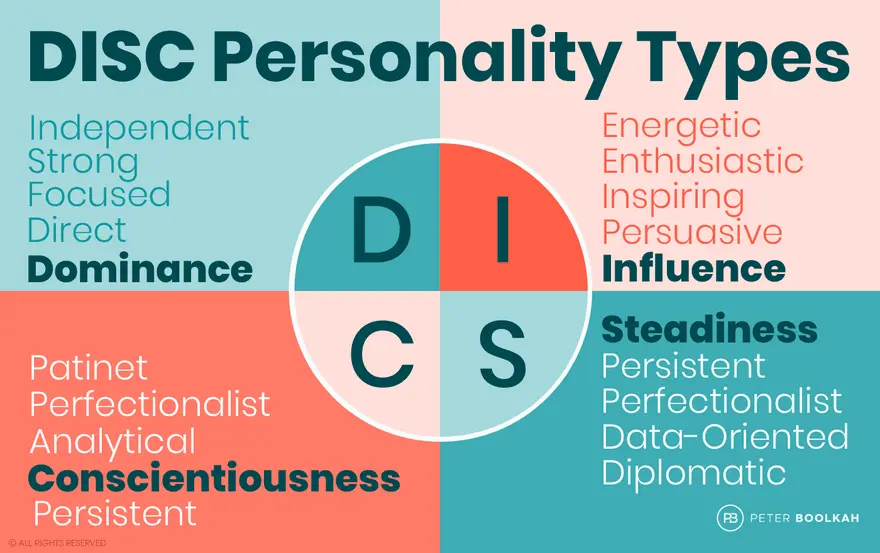When Different Behavioral Styles Clash at Home: DISC-Based Strategies for Family Harmony
- partedu

- Sep 27
- 7 min read

Have you ever felt at home that you don’t understand each other’s language?
This feeling may arise when family members pursue different goals and desires. One wants to make decisions and move toward a brighter future, while another prefers to engage in conversation and share thoughts and emotions with others. Meanwhile, one may seek peace and quiet in order to think in a calm space, whereas another looks for excitement and activity, eager to live with more energy and enthusiasm.
This contrast in needs and desires can lead to misunderstandings and tension in family relationships. Perhaps the problem does not stem from a “lack of love or cultural differences,” but from something deeper: **different behavioral patterns**.
Each person, based on life experiences, family upbringing, and social environment, develops specific behavioral patterns that shape how they interact with others. These patterns may include communication styles, ways of expressing emotions, and even methods of problem-solving.
For example, someone raised in a family with open and direct communication may expect others to speak in the same way, while another person who grew up in an environment with indirect or subtle communication may refrain from expressing feelings openly and instead rely on nonverbal cues and signals.
These differences in behavioral patterns can create emotional distance and hinder mutual understanding. Therefore, recognizing and understanding these patterns, and striving to build a healthy and effective communication environment, can greatly improve family relationships.
By creating space for dialogue and open exchange, family members can grow closer and gain a deeper understanding of one another’s needs and desires. Ultimately, this process can lead to a healthy and enriching family environment in which every individual feels valued and understood.
The DISC model is one of the most accurate tools for understanding these differences. Each person enters family relationships with a unique pattern of behavior, decision-making, and reactions. When these patterns are not aligned, conflict and misunderstanding are natural. But the good news is that by understanding these very differences, we can build a bridge from conflict to harmony.
1. Conflict Is Not a Sign of Lovelessness; It’s a Sign of Difference
Many parents or spouses, when faced with behavior different from their own, interpret it as resistance or disrespect. These judgments usually stem from a lack of proper understanding of others’ needs and feelings. In fact, this way of thinking can lead to tension and misunderstanding in family or marital relationships. For example, when a parent encounters a particular behavior from their child, they may quickly conclude that the child is being disrespectful or defiant.
For instance, a father may say, “Why is my child so slow and hesitant?” This question may come from frustration and concern, but in reality, the child may be trying to process information and emotions. He or she may need to make decisions in a calm and safe space rather than under the pressure and stress of parental expectations, especially when faced with difficult choices or complex emotions.
Recognizing behavioral types means learning to **understand rather than judge.** This concept helps us, instead of reacting impulsively or negatively, to look at others’ behaviors with openness and empathy. By understanding different behavioral types, we can better recognize others’ needs and emotions and connect with them more effectively.
Such understanding not only improves family and marital relationships but also enhances empathy and collaboration in social and professional environments. As a result, learning how to identify and understand different behaviors helps us not only to communicate better with others but also to manage ourselves more effectively in various situations.
2. The Golden Rule of DISC at Home: Speak Their Language
In family communication, *“saying it right”* is not enough; we must also know how to be *“heard right.”* This is especially important in families, where the environment is full of emotions and deep relationships. Effective communication requires not only that our message be expressed correctly but also that it be properly understood by the other person. These two aspects — accurate expression and accurate understanding — together can strengthen family bonds and prevent misunderstandings.
To achieve this, we need to learn the behavioral language of each personality type and understand that each individual may respond to communication in a different way. In this regard, recognizing and understanding others’ needs and personality traits can be the key to successful communication:
- **With decisive and result-oriented individuals, be clear and direct.** These people usually seek quick and effective results and value clarity about expectations. Give them autonomy and let them feel involved in decision-making. This not only boosts their confidence but also helps them feel that their opinions and needs are respected.
- **With social and emotional individuals, speak with energy and warmth.** They value emotional and social connections and enjoy positive interactions and regular encouragement. Don’t neglect praise, and use positive body language in conversations. This helps create a friendly and supportive atmosphere where people feel comfortable expressing their feelings and ideas.
- **With calm and loyal individuals, be reassuring and kind.** They need time and stability and usually seek security and trust in relationships. To communicate effectively with them, speak gently and patiently, and give them time to share their feelings and thoughts. This approach strengthens emotional bonds and fosters loyalty within the family.
- **With precise and logical individuals, speak with reason and structure.** They enjoy analysis and logical thinking and value discussions based on evidence and clear reasoning. So when speaking with them, use accurate and reliable information, and show that your views are grounded in logic and careful thought.
When everyone learns to speak the behavioral language of others, misunderstandings decrease, and affection becomes more genuine. This mutual understanding can strengthen family relationships and help each person feel valued and respected within the home. Ultimately, such communication fosters a healthy and positive family environment where all members can comfortably express their feelings and opinions and support one another.
3. Balancing Differences Is the Key to Family Harmony
In families, there is usually a combination of several personality types, each with its own distinct characteristics and traits. For example, a spouse who values organization and planning may pay more attention to the structural aspects of life and seek to establish a regular and predictable routine. This person may focus on details and scheduling, striving to ensure that everything is done correctly and on time. In contrast, a spouse who values emotions and relationships may focus more on the emotional and human aspects of life, giving importance to establishing deep and meaningful connections with others. This person may be sensitive to their partner’s feelings and emotional needs and strive to create a warm and friendly environment in the family.
However, these two personality types may sometimes feel incompatible. For instance, the organized spouse may feel upset by the other’s lack of order and planning, while the emotional spouse may feel tired of the organized spouse’s precision and strictness. But if both can understand that they actually play **complementary roles** for each other, these differences can become a source of strength. This means that each can benefit from the positive qualities of the other and thereby enrich their shared life.
One spouse’s precision can prevent mistakes and inconsistencies by the other and help them achieve their goals. At the same time, the other spouse’s enthusiasm and creativity can make life vibrant and joyful for the organized partner, reminding them that life is not limited to planning and order but should also include enjoying moments and paying attention to feelings and new experiences. This interaction between two different personality types can lead to the creation of a balanced and lively family, in which each member not only grows and progresses individually but also helps one another become the best version of themselves.
4. Practical Strategies for Family Harmony
**A. 🧭 Know Your Family’s Behavioral Map**
Have a DISC test administered by a specialist to determine each family member’s behavioral pattern.
**B. 🗣️ Hold a Behavioral Discussion Session**
Sit together and talk about your behavioral styles. Do so without judgment and only with the goal of mutual understanding.
**C. ⏸️ Pause During Conflicts**
Instead of reacting immediately, ask: “Which behavioral pattern is he/she showing right now? How can I respond in their language?”
**D. Express Targeted Appreciation**
Each pattern enjoys a specific type of appreciation:
- Result-oriented: praise for achievements
- Social: praise in group settings
- Calm/steady: sincere, personal thanks
- Precise/logical: appreciation for order and accuracy
**E. 🤝 Assign Roles According to Patterns**
For example, if your child is social, artistic and group responsibilities may be more appealing;
if they are precise, assign analytical and organized tasks.
5. Love Means Accepting Differences
A healthy family is not one in which all members are alike and move in the same direction; rather, it is a family that recognizes differences well, accepts them, and utilizes these differences for its growth and development. Such families allow their members to express their unique personalities while also using the diversity within the family to strengthen relationships and create a supportive and loving environment. In these families, each individual is recognized as a valuable part of the whole family, which makes members feel secure and valued. Moreover, in these families, healthy communication and dialogue are used as tools to resolve conflicts and achieve a better understanding of one another.
Ultimately, the DISC model is not merely a tool for understanding personalities and behaviors; it is recognized as a way for **“conscious loving.”** This type of love allows an individual to know how to speak to the other person, “them,” in their own language and to understand their emotional and psychological needs. In fact, this model helps us, through better self-awareness and understanding of others, to build deeper relationships and become aware of each other’s feelings and needs. With this approach, we can act more effectively in our family and social life and communicate with others. Such interactions not only strengthen family relationships but also remind us that each person, with their unique traits and needs, can contribute to the richness of both family and society.




Comments